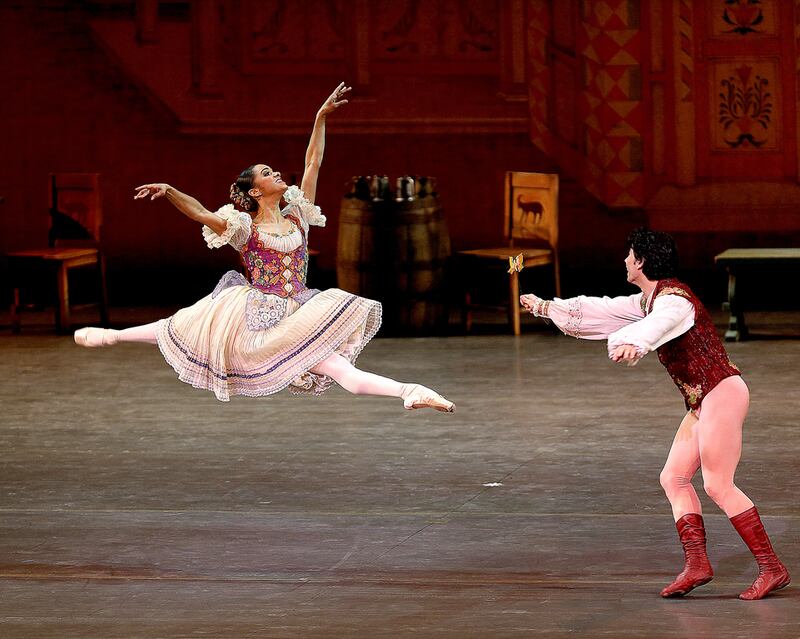Coppélia is a sweet and light-hearted ballet ideally suited for a festival setting – and the performance yesterday by American Ballet Theatre (ABT) at Emirates Palace, part of the Abu Dhabi Festival (ADF), transmitted its delightful core through an exuberant display of technically impeccable dancing.
Coppélia has been in the ABT repertoire since 1942, but the company had, as its artistic director Kevin McKenzie told The National last week, taken “a lot of liberties” with it over the decades. In 1997, however, the company revised and restaged its production, creating a piece more in keeping with the original from 1870.
The story is simple: the lonely toymaker Dr Coppelius surrounds himself with life-size clockwork dolls; his favourite is Coppélia, who at the start of the ballet is posed on his balcony as if reading. Franz (the vigorous, virile Herman Cornejo), a young townsman, catches sight of her and becomes infatuated, forgetting his fiancée Swanilda (a divine turn by the supremely talented Misty Copeland).
The ballet is in three acts, and the middle act is easily the best – not least because its narrative is the most immediately understood; the first and third acts are extended celebrations of impending wedding and marriage achieved, and do contain some of the night’s most captivating dancing, but their actual narrative content is small.
In that second act, Swanilda and her friends break into the Doctor’s workshop and set his clockwork creations in motion – a Chinese doll, a Harlequin, Spanish and Scottish mannequins (Léo Delibes’s melody-stuffed score breaks into charming clichés for each nationality, and elements of national folk dance infuse the steps, the Scottish being particularly amusing). But the Doctor returns and chases them away – except for Swanilda, who hides in an alcove beside Coppélia.
Meanwhile, Franz has climbed a ladder to the balcony, in pursuit of the beauty who he does not yet realise is merely a dummy. The Doctor detains him, then plies him with a debilitating potion; when Franz falls unconscious, the Doctor attempts to cast a spell transferring Franz’s soul into Coppélia’s body. But the figure who emerges from the alcove is of course Swanilda in Coppélia’s clothes; she distracts the Doctor until Franz regains consciousness and they flee.
It’s heartening to see how seriously ADF takes classical dance, especially in its outreach programme to local children – and heartening how gladly the audience, which included a goodly proportion of youngsters, responded to this joyous performance.
[ kmcc@thenational.ae ]










